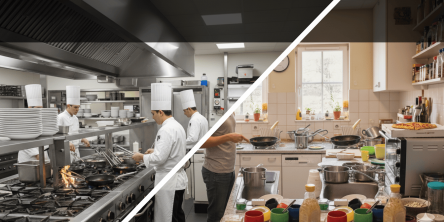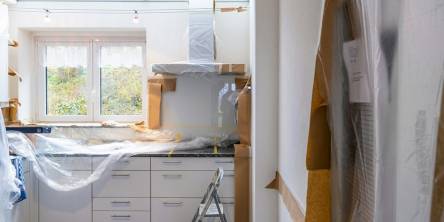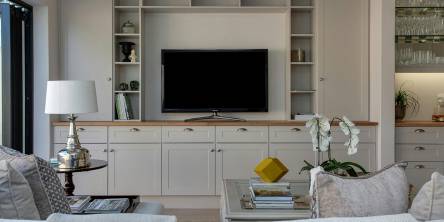Design Thinking in Furniture: Solving Real Problems for Real Families

In today’s fast-paced world, families face evolving lifestyle challenges that traditional furniture solutions often fail to address. From space limitations and cluttered homes to multifunctional needs and child-friendly designs, modern households require more than just aesthetically pleasing interiors—they need practical, innovative solutions that improve daily life.
That’s where design thinking in furniture comes in. This user-centric approach is transforming how furniture is created, putting real people and real problems at the center of the design process. It’s not just about style; it’s about solving everyday issues for real families with smart, adaptable, and durable furniture designs that make living easier and more efficient.
What is Design Thinking in Furniture?
Design thinking is a creative and strategic process that emphasizes empathy, ideation, prototyping, and testing. In the context of furniture design, this approach means:
● Understanding family lifestyles and space challenges
● Observing how furniture is used in daily routines
● Creating adaptable and modular furniture pieces
● Testing solutions with actual users to ensure functionality and comfort
Rather than producing one-size-fits-all products, design thinking helps brands develop furniture that caters to the specific needs of modern families. By listening closely to the users and integrating their feedback, designers create products that are not only beautiful but also deeply functional and relevant to everyday life.
Why Design Thinking Matters for Families
Every household is different. A growing family with young children may prioritize safety and storage, while a remote-working couple may need convertible furniture to maximize space. Design thinking identifies these pain points and offers innovative furniture solutions that make everyday life easier.
Below are a few common problems that design-driven furniture helps solve:
1. Limited Living Space
Urban homes and apartments often struggle with space constraints. Design thinking leads to space-saving furniture like bunk beds with storage, foldable dining tables, and extendable sofas—ideal for maximizing small spaces without sacrificing style. These designs make it possible to live comfortably and efficiently in compact environments by turning every inch into usable space.
2. Clutter and Organization
Families accumulate a lot of stuff—books, toys, gadgets, clothing. Smart storage solutions such as built-in drawers, hidden compartments, under-bed organizers, and multifunctional units offer a clean, organized living environment. When storage is seamlessly integrated into design, it helps reduce visual noise and keeps the home more harmonious and easy to manage.
3. Child-Friendly Furniture
Safety is a top priority for families with young kids. Rounded corners, soft-close mechanisms, durable finishes, and non-toxic materials are all features inspired by empathetic design processes. Through design thinking, furniture becomes safer, more intuitive to use, and better suited to support the needs of growing children while putting parents at ease.
4. Evolving Needs
Design thinking embraces flexibility. Modular systems that grow with your child or transform as your lifestyle changes (like a crib converting into a toddler bed) ensure long-term usability and value. Furniture designed with adaptability in mind can shift functions, such as a study desk doubling as a vanity, helping families adjust as life progresses.
Real-Life Examples: How Modern Furniture Brands Apply Design Thinking
Forward-thinking furniture companies are using design thinking to offer bespoke furniture solutions that genuinely reflect the needs of real homes. For example, UK-based brands are gaining popularity by crafting customized bunk beds, fitted wardrobes, and multifunctional shelving systems—blending practicality with a modern aesthetic.
These custom solutions go beyond visual appeal. They consider who will use the furniture, how it will be used daily, and what specific features can enhance comfort and efficiency. Whether it’s incorporating built-in ladders that double as bookshelves or designing sleeping spaces with dedicated study zones, customized bunk beds demonstrate how furniture can evolve into a smart, problem-solving centerpiece in the family home.
If you're looking for thoughtfully designed, space-efficient furniture tailored for family living, consider exploring these smart furniture ideas for children’s rooms and shared spaces from a company committed to innovation and quality. These brands use real-world testing and feedback loops to continuously improve and refine their designs, ensuring they stay relevant and effective in solving everyday challenges.
Benefits of Design-Led Furniture for Families
The advantages of applying design thinking in family furniture solutions are wide-ranging:
● Better space management for growing families
● Enhanced safety and durability in child-friendly designs
● Customization to meet unique household needs
● Improved aesthetic appeal without compromising functionality
● Sustainable choices that support long-term living
All of these benefits contribute to creating a home environment that not only looks good but also functions well under the pressures of real, day-to-day life. Design-led furniture is built with purpose—offering lasting solutions that adapt to the way modern families live, grow, and change.
Final Thoughts: The Future is Functional
As family dynamics continue to evolve, so must the spaces we live in. Design thinking in furniture is not just a trend—it's a necessary evolution that addresses the very real challenges families face every day. Whether it's finding a better way to store your child’s toys or creating a multifunctional room that adapts to remote work, design-led solutions are shaping the future of home living.
By focusing on real-life functionality, safety, and adaptability, furniture designers are helping families live better, smarter, and more comfortably. Embrace a smarter, family-first approach to furnishing your home—and see how thoughtful design can truly make a difference.
Similar Articles
As winter settles in and temperatures drop, families across the country brace themselves for the inevitable spike in energy bills.
Wooden floors have long been the subject of admiration for their classic beauty, natural warmth, and strength.
When it comes to giving your home a fresh coat of paint, most homeowners focus on choosing the perfect color and finish.
The holiday season transforms neighbourhoods into glowing wonderlands, but today's homeowners are moving beyond the traditional approach of simply stringing lights wherever they fit.
City homes face a constant challenge around outdoor space. Gardens are small or nonexistent, balconies are narrow, and any outdoor area feels precious.
Anyone who's worked in a commercial kitchen knows they operate with an efficiency that home kitchens rarely match.
When you want to transform your home with a complete makeover, you must find the best ways to save money. Let's check some cost-saving tips for renovating.
Handrails are one of the few things that merge safety, fashion, and structural importance in a home most naturally when the home is being either designed or renovated.
Cabinets play a vital role in any home, combining function, organization, and aesthetic appeal. Whether in the kitchen, bathroom, or living area, cabinetry defines the layout, storage capacity, and overall look of a space.









